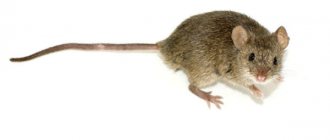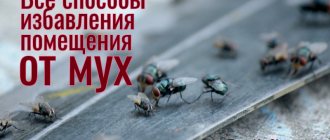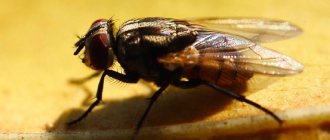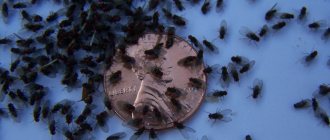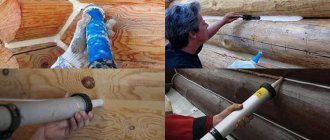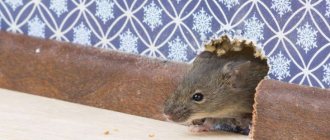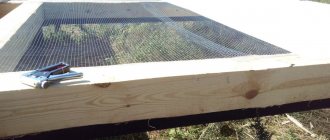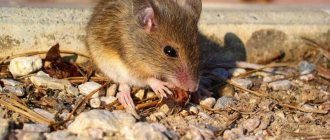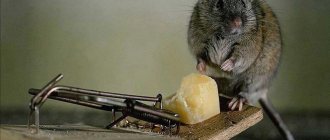Mice in the house are always a guaranteed nuisance. They damage walls, furniture, food, and spread infections and unpleasant odors. Rodents reproduce at a rapid pace; in a year, one adult can breed up to 100 cubs. Therefore, pest control must begin at the first sign of presence. Or take preventative measures in advance to protect yourself and your dacha from harm.
The most active period of migration is autumn, when it begins to get cold outside and food reserves in the fields are exhausted. Rodents move en masse into rooms with elevated temperatures, food and water supplies. After harvesting, mice and voles move into warm rooms for the winter: houses, cottages, non-residential buildings. They cause damage to food supplies prepared for the season.
Settling in cellars, basements, and attics, they destroy vegetables, grain, and spread infectious diseases. It is impossible not to notice the presence of uninvited guests in the house. They emit specific odors, sounds and noises, especially at night, and leave droppings everywhere and in large quantities.
Types of pest mice and their characteristics
First, you need to figure out what kind of enemy you will have to deal with, because, as they say: “mice differ among mice.”
House (house) mouse
Brownie - this does not mean at all that she lives only in human dwellings. A rodent may well be content with what it finds in the garden or vegetable garden: plant seeds, young shoots, tasty berries, small insects, their larvae, etc. When cold weather comes, rodents find a secluded place in dachas, in outbuildings, and here they already feel at ease and do not disdain anything: bulk products, vegetables and fruits, furniture, textiles, paper, plastic, insulation and even candles. The biggest problem is that they reproduce too quickly with a large number of offspring (10-12 litters per year, each with up to 12 cubs). Therefore, this problem cannot be downplayed.
Vole
The field mouse is visually similar to the house mouse and is directly and directly related to the hamster family. As a rule, it is these rodents that annoy owners of gardens and vegetable gardens. They very productively destroy or spoil succulent plant roots and young shoots, they like fleshy tubers and flower bulbs, and the animals will not refuse the bark of shrubs and trees, seeds and, of course, food supplies that they find in the house. When fighting them, it is important to take into account that they live in numerous colonies.
Shrew
Shrews, although similar to mice (they have a more elongated muzzle), belong to the shrew family and, by the nature of their activity, are more reminiscent of moles. They are carnivorous, feeding on insects, larvae and, in very rare cases, plants, but in search of food they can cause significant damage to the garden, plowing up the entire area and leaving plant roots without soil and nutrition. Perhaps not every owner has to deal with shrews, but some methods of dealing with mice also affect these animals.
Folk remedies for rodent control
If you don’t want to use poisons or ultrasound, you can try folk remedies for mice in the country. Their action is based on rodents’ rejection of certain odors and irritating properties.
Herbs - mint, tansy, wormwood, cilantro; rodents do not like the smell of these herbs, and if you hang bunches of fresh plants around the house, you can drive out uninvited guests.
Birch tar emits a pungent odor, is very corrosive, and remains indoors for a long time if you moisten a rag with it. The disadvantage of this method is that things in the house can also adsorb the smell, especially in a room closed for the winter; it is difficult to ventilate it.
Fumigating the room with a pod of hot pepper or a piece of fur from a killed mouse does not give any effect. As long as there is smoke, the mice do not come; as soon as it becomes fresh, they return. A similar problem appears after using a sulfur or peat bomb.
Ash scattered on the floor has little effectiveness. Sticking to the paws, fur and getting into the gastrointestinal tract after licking, it disrupts the functioning of the digestive tract. The pads of the paws become irritated. All this may force mice to avoid the dangerous area, but will not force them to leave the dacha.
What danger do mice pose?
Mice are a real problem. Animals not only damage walls, furniture and clothing, they eat or infect food, “shit” everywhere, carry a “mouse” smell and breed in huge numbers. It would seem, what do tiny furballs with beady eyes and constantly moving antennae have in common with big problems or diseases? In fact, everything is very serious, because mice:
- Spoil or destroy food. And if fur, excrement or pieces of dead skin get into the latter, then there is a very high probability that people will experience food poisoning, allergic reactions, and exacerbations of diseases (for example, the respiratory tract).
- They can bring fleas into the house that carry dangerous infections to humans.
- They carry viruses and pathogenic bacteria that can cause dangerous diseases such as plague, typhoid, cholera, as well as various serious poisonings.
- They can cause a fire because they chew through wiring in places that, at first glance, seem completely inaccessible.
- They leave an unpleasant, specific, difficult-to-remove odor in the house.
Use an ultrasonic repeller
Manufacturers of household appliances have joined the fight against domestic rodents and invented repellers - electric repellers based on ultrasound. The device is harmless to humans, but it panics the animals living in the house and forces them to leave the room. Repellers are available in various modifications, but the principle is the same.
To get the expected effect, follow the conditions:
- Don't expect a device installed in one room to cover all rooms. Ultrasound does not pass through walls; it can only have an impact where it works.
- Do not unplug or take it to another location. The repeller will survive rodents only if it is operated around the clock for 15-25 days in a row.
- Install the repeller in a room where there are no other anti-mouse products. It is intended to “scare off”, i.e. not allowed and incompatible with baits that attract animals.
- There should be no beds, carpets, or clothes in the room - they absorb ultrasound and reduce the effect.
- In winter, for continuous use, provide the repeller with mains power. The batteries freeze and the device will not work on them.
Known types of repellers:
- “Tornado-200” - has a variable radiation range from 18 to 17 kHz, intended for small rooms (up to 200 m²);
- “ElectroCat Turbo” - in addition to ultrasound, scares mice with light flashes and sound. Used in large rooms (up to 400 m²), more effective than the previous one;
- "Chiston-2" is a powerful device with a continuous signal, designed for large premises and warehouses.
What you need to know about mice?
Now we know what danger small rodents pose, but I would like to note a few more interesting points:
- The size of the animals is 6-10 cm, they have an excellent sense of smell, hearing, touch and taste.
- Running speed – 12-13 km/h, long jump – up to 75 cm, high jump – up to 40 cm.
- The animals are good at hiding, and a medium-sized animal can crawl through a 10-mm hole without any problems.
- In search of food, rodents do not go long distances from their nest and do not share their territory with rats.
- The incisor teeth of mice grow throughout their lives, and to prevent them from growing into the jaw, the animal must constantly chew something.
Physical methods of killing mice
There are physical methods for killing mice:
- The most common method of catching rodents is a mousetrap. But it is not always effective. It happens that a mouse may eat the bait, but the trap will not work.
- A live trap differs from a mouse trap in that the animal remains alive and simply cannot escape into the wild. It is a container with a trigger mechanism, which is activated by a hook with bait. When the mouse pulls the bait, the mechanism is triggered and the exits are closed.
- An electronic trap is a container that runs on batteries or mains. The animal comes to the smell of the treat placed inside. A special indicator detects when a rodent enters the container. At the same time, all exits are closed and a fatal discharge of current strikes the pest. This device is safe for children and animals, as it has very small cone-shaped holes. If the device is poorly closed, it immediately turns off.
- You can buy a glue trap ready-made or buy special glue and make it yourself. The glue is non-toxic and does not have a pronounced odor. The only inconvenience of use is the possibility of getting dirty. To apply the product you can use tiles, plastic, thick plywood, cardboard, glass. Apply glue to the surface in strips at a distance of 1–2 cm from each other. You need to put a treat in the center of the trap. The best option is to use cardboard or plywood, which can then be thrown away.
Photo gallery: physical methods of killing mice
The mechanical mousetrap needs to be recharged and cleaned
It is better to choose bait for a live trap with a strong aroma to attract a rodent
It's easy to make your own glue trap
Electric shock instantly strikes the rodent
How can you tell if there are mice in your dacha?
The following signs may indicate that new residents have appeared in the house or nearby:
- The presence of minks near the walls of the house and outbuildings.
- Characteristic holes in the insulation or cladding of a building.
- Traces or already clearly visible paths near the wall.
- Bags or boxes containing various cereals or other products are damaged.
- Blankets, furniture, various textiles, including clothes, were damaged.
- Electrical wiring or even some pipes may be chewed.
- The harvest, which is already in the basement, has been gnawed.
- You can find droppings that have a specific smell both outside and inside the house.
- At night a characteristic squeak and rustling noise is heard.
- Fruits are spoiled, both fruits and vegetables, young plants, especially tulip and daffodil bulbs.
- Tree bark has been chewed.
- There is a regular shortage of eggs in the chicken coop.
- Domestic cats and dogs show anxiety and often sniff as if looking for someone.
If at least one of the listed points occurs, you need to urgently think about it and take effective measures to destroy or expel the mice. In this case, there is no time for thought and doubt. The fact is that rodents that enter a person’s house belong to a group of mice that always live next to people and are attached to them. Animals quickly adapt to any conditions and can easily tolerate heat, cold, heavy rainfall or prolonged lack of food.
Ways to protect fruit trees
In winter, the wood of fruit trees is a real treat not only for mice, but also for hares and other rodents. The first thing you need to do if at least one side of your plot overlooks a forest or field is to fence off your own territory with a high, solid fence, installing it on a concrete base or digging it into the ground at least 30 cm.
Fruit tree wood is a treat for mice in winter
The following methods will help protect trees from mice in winter:
- When preparing a tree for winter, the trunk is wrapped in several layers of covering material, burlap, and nylon tights. Place branches of any coniferous tree between them, placing their needles down. The best option is spruce; its needles are short, prickly, and stick out in different directions. Cover the tree trunk circle with spruce branches. The needles prick the sensitive noses of rodents; they do not touch the tree. The spruce branches do not interfere with the aeration process.
The spruce branches protect fruit trees not only from rodents, but also from frost - Wrap the trunk with roofing felt so that it is not completely adjacent to the tree. In winter, it will protect the tree not only from rodents, but also from sunburn. But the roofing material practically does not allow air to pass through, so the cover must be removed in time, avoiding the root collar becoming warm. Mice often make digs, so the roofing material needs to be dug into the ground at least 15–20 cm.
In the spring, roofing material from the fruit tree must be removed before a constant positive temperature is established. - Fence trees with fine mesh plastic or metal mesh. It also needs to be dug into the ground. Metal is simply too much for mice, and they really don’t like the specific taste of plastic.
The net must be dug into the ground, otherwise it is useless for protection against mice - In preparation for winter, whitewash the trunk and the lower third of the skeletal branches. The composition based on slaked lime is quite caustic, mice do not like it. To enhance the effect, manufacturers add special substances that repel rodents to store-bought whitewash; to homemade whitewash, they add shavings of tar soap and zinc oxide (zinc compounds are the basis of many poisons for rodents).
Autumn whitewashing performs many useful functions; this stage of preparing a fruit tree for winter cannot be neglected - If you have old buckets and large pots without a bottom, put them on young seedlings, digging them 15–20 cm into the ground. Such a barrier is impenetrable for mice, but they sometimes climb over it from above.
Don't rush to throw away an old bucket without a bottom - it can be put to useful use
The tree trunks of fruit trees are often mulched. In general, this is a very useful agrotechnical event. But do not choose straw as mulch - mice often live in it.
Ways to fight
Now, knowing well who we are dealing with, we begin to act actively. The fight must be waged in two directions: prevention and direct destruction or expulsion. In order to correctly decide which method of warfare to choose, it is necessary to clarify some points:
- Room size and type.
- Volumes of food left for storage.
- The presence of children, sick people and pets in the house.
- Number of rodents detected.
No. 1. Chemical (poisons)
The method of chemical destruction of animals can be called one of the most effective. There are a considerable number of different poisons, which are:
- Inorganic (contains heavy metals, causes severe intoxication, large quantities are required).
- Organic (a small amount is enough).
- Cumulative action (gradually accumulate in the rodent’s body, leading to disruption of the functioning of various organs of the animal and their subsequent failure).
- Fast-acting (acts on mice almost instantly).
Chemical mice control agents vary in release form . It can be:
- Powders are indispensable for preparing baits that will attract rodents to a meal of poisoned products.
- Gels and creams can attract the attention of many rodents at once. Chemicals with flavor additives and various strong flavors can be used for a long time without loss of effectiveness.
- Tablets and briquettes , as a rule, have a bright color and an attractive (for mice) odor. They are convenient to use in places that are difficult for humans to reach.
- Liquid poison is mixed into the water, while limiting the access of pest animals to other sources of drinking.
- Sprays and aerosols are mainly used by humane owners of dachas, vegetable gardens and gardens. Drugs whose active ingredients are methyl salicylate and nonivamide cause nausea, vomiting in rodents and force them to retreat from the area they like.
It is important to consider that repellent substances do not poison mice or reduce their numbers, but simply force them to leave a specific territory, and therefore move to another
The most effective poisons include:
- “Death of the Rat”, “Biorat”, “Storm”, “Nutcracker”. The active ingredient in the drugs is brodifacoum , which causes suffocation and internal bleeding. Animals die 7 days after taking the bait.
- “Zookoumarin Neo”, “Zoopasta” is an anticoagulant , a highly toxic poison, and is a mummifying agent.
- “3D-Ratsid”, “Antirodent”, “Blockade”, “Absolon”, “Clean House”, “Rattidion” are much more toxic than the previous drug; their active ingredient is bromadiolone , a second-generation anticoagulant.
- “Ratindan”, “MEF”, “Rotendant” are some of the most toxic drugs, the active ingredient of which is diphenacin . In powder form, it is dangerous for both animals and people.
- The “Efa” remedy is grains soaked in poison. The basis of the highly toxic poison is ethylphenacin , so it is important that the product does not come into contact with human skin. The drug has proven itself well with long-term use.
- “Tsunami”, “Tsunami-Extra”, “Ratol” are considered one of the best accumulative products for rodent control. The active basis of special tablets disrupts the functioning of the circulatory and cardiac systems of the rodent, while the drug is harmless to humans.
Products such as “Mortorad”, “Storm”, “Mouse Death”, “Nutcracker”, “Rat Death” are positioned by stores as mummifying. In any case, these are the five most effective means for use in the countryside, if you do not take into account the drugs used by professional specialized services: “Goliath” or “Deratomin”.
For those who decide to fight rodents using poisons, it is important to observe the necessary precautions as much as possible, carefully study the manufacturer’s recommendations, as well as carefully prepare the room itself and be sure to take care of the safety of people and pets
Recipes for poisons “from the people”:
- Sugar – 1 part, flour – 2 parts, gypsum – 6 parts (you can mix flour and putty) or make a mixture of sugar, flour and soda.
- Powdered sugar – 1 part, flour – 2 parts, quicklime – 6 parts.
The baits made in this way are thrown to the mice and they eat them with pleasure. Be sure to put water nearby. When the mixture enters the animal’s stomach, in the first case, it hardens, clogging the digestive organs; in the second, it corrodes their mucous membrane.
- The cork stopper from wine or champagne is finely chopped and fried in oil. The mouse eats this treat and gets indigestion and a sad end.
- The same cork can be crushed and “camouflaged” by mixing it with some kind of cereal.
- Barium carbonate (5 g), flour (20 g) and melted fat (30 g) are mixed to produce a poisonous mixture from which the balls are formed. The latter are best placed near rodent burrows.
- Prepare a “treat” from gypsum, dry potatoes and cinnamon.
- A mixture of dry putty and flour (1:1) with the addition of salt and water.
- Foam rubber cut into small pieces and soaked in aromatic sunflower oil is suitable.
No. 2. Repellers
Technology does not stand still and many companies offer a considerable selection of devices that are quite effective in the fight against small rodents and at the same time completely safe for both animals and people. When choosing a suitable device, you need to take into account its main characteristics:
- Safety and ease of use.
- Availability of a power source.
- Signal frequency.
- Maximum effective range.
We are talking about special repellers:
Ultrasonic
The ultrasonic pulse that the device sends disorients the mice, causes them to panic, fear and forces them to leave the area where the seal is spreading. Humans cannot hear or perceive high-frequency vibrations, but they cause a lot of inconvenience to rodents. The main advantages of such devices include:
- Convenience and ease of use.
- Use for a long period of time without interruption.
- Environmentally friendly.
- Safety for humans and pets (note: ornamental rodents are at risk).
- As an added bonus, it is effective against mosquitoes, flies and other flying squirrels.
To prevent small pests from getting used to the generated sound, as a rule, its frequency periodically fluctuates between 20 kHz and 70 kHz. In addition, models have been released that are equipped with light indicators - flashes that appear randomly not only blind mice, but also do not allow them to navigate well in space.
They have high-frequency devices and small “ cons ” that you need to be aware of when choosing a particular device:
- A large number of textiles, upholstered furniture, paper products and other similar items in the room reduce the efficiency of the device, since they all actively absorb ultrasound.
- The pulse that the repeller sends cannot pass through the walls, but is only reflected from them, so the action of the device is limited to the walls of a particular room.
Conclusion: the fewer obstacles in the path of ultrasound, the better. And there is no need to rush into results. Despite the fact that the device begins to operate from the first minutes, to completely expel rodents, the repeller will require constant operation for several days, or even weeks.
The following received good ratings from users:
- Model range “Tornado” and “Typhoon” (the devices have a wide frequency range and are effective when working in both large and small rooms.
- The “Grad” series of devices (have a distinctive sound sequence, can operate from different power sources (mains, batteries, accumulator), some devices additionally have bright LEDs).
- The Chiston line of devices (using a continuous supply of a powerful signal, which allows you to expel rodents as quickly as possible).
- “ElectroKot”, “Ecosniper” (working in several modes is possible - pulsed, continuous and combined).
- "Weitech" (easy to use, affordable, compact in size, universal mouse and insect repeller) and many others.
Electromagnetic
For the operation of electromagnetic devices, it is necessary to have electrical wiring through which impulses are transmitted. The radiation emitted by the devices affects rodents in a similar way to ultrasonic repellers: they cause anxiety and discomfort in animals, and panic attacks force mice to leave their homes. Advantages:
- Environmentally friendly and free of harmful substances.
- Long work without breaks.
- No absorption of impulses by upholstered furniture and textiles.
- Large coverage area (without compromising the operation of various electrical appliances).
- The ability to influence rodents in the voids of walls and ceilings.
- Strike at crawling insects.
As for the shortcomings . The main and very significant problem is the need for wiring, which must be laid along the perimeter of the entire room, in extreme cases - at least along the longest wall. If this condition is not met, all efforts will be in vain.
The most popular and effective models:
- “Riddex Plus” - the device has a plastic impact-resistant case, is resistant to humidity - up to 90% and temperature changes - from -35 to + 45 ° C, the repeller coverage area is 80-200 sq. m.
- "EMR-21" is a reliable device with a light indicator, operating within a radius of 230 square meters. m.
- “Digital” is a budget version of the repeller with a range of 80 square meters. m. Perfect for a summer cottage.
- “Range 3”, “Yastreb 200” is a convenient compact model with enough power to be used in both small and large areas.
Combined
Obviously, the best choice is combined devices that combine all the “advantages” of the two previous varieties. And, although the price of the proposed devices is a little higher, it is more than compensated by their versatility and speed of action. It's worth noting here:
- "Chiston-2".
- "Tornado 1200".
- Riddex Quad.
- "Ultrasonic Rodent Repeler"
No. 3. Mechanical (traps and mousetraps)
Mechanical methods of exterminating rodents today do not lose their relevance and, on the contrary, are being improved and modified. The list of designs is considerable and I would like to take a closer look at it. So:
Mousetrap with frame
A well-known device for catching rodents. A steel frame, which kills the rodent, and a spring are fixed on a wooden base (can be plastic or metal). This design has been well known to everyone for a long time, so many people know that it can often:
- Jam.
- Simply record a “false call” while the mouse manages to drag away the bait.
- Not particularly effective in case of massive pest infestations.
In addition, we should not forget that the animal’s corpse must be removed from the mousetrap and disposed of. But not everyone can do this.
Tube mousetrap
This invention can be safely used by people who experience panic horror, both in front of living and dead animals. An opaque plastic pipe, a bait and a mechanism that does not allow the animal to get back out are simple components, the effect is obvious, and the visual result does not cause disgust. An additional design element in the form of a striking device is possible.
Swing trap
This device is called differently: “swing”, “springboard”, “water captivity”, etc. But the principle of operation is the same everywhere, and the trap itself is quite effective - in a short period of time you can catch a large number of small rodents. Making the design yourself will not be difficult. For this you need:
- Any container such as a bucket, spacious, which will serve as the basis of the trap.
- The lath is thin, you can even use a ruler.
- A knitting needle or wire that does not bend.
During the assembly process, the wire is securely fixed perpendicular to the rail. The resulting element is installed on the bucket so that the “swing” ruler touches only one of its edges. A rodent bait is attached to its other end. And then the structure is installed in the right place so that the animals can freely enter the springboard from a stable side and move straight into the trap. Very often the bucket is not left empty, but some water is poured into it.
Trap with loop
The device is really very simple in design. As a rule, this is a wooden block with one or more holes. Loops made of very thin but strong wire are fixed with a thread inside the “mink”. Since the mouse will have to chew the thread to get to the “yummy”, it itself will launch the mechanism of its destruction - the noose will kill it in any case.
Traps and cages
Both traps were borrowed from hunters:
- In the first case, we are talking about mini-analogues of traps for large predators. The design includes: a solid base, which has sharp teeth around the perimeter, a cocking mechanism and a bait located inside the device.
- In the second, it is the most ordinary cage made of steel, small in size, with a hook inside for securing treats and an automatic door. The latter is triggered when the mouse wants to steal food.
The second device, unlike the first, refers to humane methods of getting rid of rodents. The captured animals are not physically harmed and can be released into the wild as far as possible from their home.
One of the popular models is the “House” plastic trap. The tube has a certain bending angle and two doors - at the beginning of the structure and at the end. In the depths, near the back cover, some mouse delicacy is placed and the front door opens. When the rodent approaches the bait, the front door slams (automatically). All that remains is to release the small pest in time.
Bottle trap
A simple device that any craftsman can do. A glass or plastic bottle with a volume of 0.5 to 2 liters is suitable, inside of which you can pour a little sunflower oil, sprinkle some seeds, and, in general, put bait. Then the bottle must be installed at an angle so that the neck is higher, fixed, and you can even make some kind of steps for the mice. Slowly, but confidently, the goal will be achieved.
Live trap jar
To organize a trap, you need to take a glass jar and a coin or a piece of cardboard with a small notch. The jar is turned upside down, a treat for the animal is placed inside, one edge of the jar is raised and placed on the edge of a coin or a vertically placed piece of cardboard. Everything must be done very carefully, because the structure turns out to be very unstable and it will not be difficult to upset the balance even for a small mouse, which is immediately caught.
Electric mouse trap
Today, not the last place among the effective traps is occupied by electric mousetraps. They are much better than their mechanical brothers and sisters. In order for the trap to start working, you need to fill it with bait and connect it to the power system (electrical network). There are live contacts inside the device. The animal, making its way to the treat, will certainly touch them and be killed by an electric shock. Most models are equipped with signal LEDs to notify you when the device is triggered.
Glue traps
When talking about methods for catching mice, we cannot ignore glue traps. Such devices are not humane, but they are among a number of popular and budget-friendly methods of exterminating rodents. Everything is quite simple. Thick cardboard strips are covered with a layer of fragrant glue. Moreover, the aromas can be very diverse, the main thing is that they attract animals. And those, following the smell, fall into a trap - a sticky layer from which they are not destined to escape.
In many cases, you can use not only ready-made traps, but also separately glue in a tube for rodents. You can apply it in different places and be especially careful not to get caught yourself.
No. 4. People's
Everything that is not manufactured on an industrial scale in finished or semi-finished form can be classified as folk methods of fighting mice. The most popular options are listed below:
- Wood ash greatly irritates the paws of animals, and they also find its smell unpleasant. Therefore, if you scatter it on mouse paths and hard-to-reach places, rodents will begin to avoid them.
- The burdock thorns will not allow the animals to enter the dacha, since they firmly cling to the animals’ fur coat, which does not make the latter happy at all.
- It would not be superfluous to treat the entrances to burrows and walls with bleach .
- branches of wild rosemary, black currant or coniferous trees not only directly next to the burrows, but also to insert them deeper into them. Such a scented barrier will repel rodents, and spruce or pine paws will also become an obstacle to movement.
- Mice cannot tolerate essential oils of wormwood, mint or elderberry If you put rags on which the listed oils are applied into the minks, most likely the mice will run away from their “familiar nests” and will definitely not appear in these places for a couple of months. This remedy is excellent for prevention.
- hot pepper (the so-called “smoking”) gives good results A large pepper pod is wrapped in several layers of newspaper, placed in some container (for example, a basin) and set on fire. There is no need to start a fire, but it is advisable to let the smoke sit in the room for a couple of days. The method is relevant for expelling rodents from basements and cellars.
- Similar to the previous method, the desired result can be achieved using a sulfur bomb. After its smoldering, the room is not ventilated for 1-2 days, and the mice flee as if “from a sinking ship.”
- You can scare away pests using Vishnevsky ointment or birch tar . You just need to treat the baseboards, thresholds, and the lower part of the furniture with them.
- To protect the area from small rodents, the following are suitable: reeds, pine branches, fabric soaked in kerosene or creolin, sawdust, tomato tops and elderberries. Along the perimeter of the territory it would not hurt to plant spurge, black root, cilantro (coriander), wormwood, mint or black currant.
- In the house, it is worth laying out on bedside tables, in cabinets, in corners or along the walls: garlic, tansy, chamomile, drop a little peppermint alcohol or peppermint oil.
No. 5. Biological
This paragraph is dedicated to animals that can be attracted to catch rodents. There are, in fact, quite a few options: cats, ferrets, hunting dogs (fox terrier, dachshund).
- First of all, of course, we are talking about cats and cats. By the way, it has been noticed that cats are more responsible hunters than cats. And the simplest mongrel cats, without regalia or family coats of arms, do the best job with this kind of work. But those who want to have a purebred animal and take it with them to the dacha to catch mice should pay attention to such breeds as Siberian, Kuril Bobtail, Russian Blue, Maine Coon, Bengals and Siamese, British Shorthairs, Abyssinians, etc.
- Ferrets are also super mousecatchers . These small, very nimble animals are a nightmare for small rodents. These animals can easily find a common language with dogs and cats, but if there are chickens on the farm, you should immediately refuse the helper of the mustelid family, without even thinking about it.
- Many representatives of the dog world are excellent rat catchers, but if a mouse comes across their path, it has no chance of salvation. The most avid hunters of small rodents are: some breeds of terriers and dachshunds, miniature pinschers, fox terriers, and rat catchers (Andalusian and Prague rat rats).
If someone wants to really surprise all their neighbors, let them get themselves a pet owl , which is also not averse to profiting from small animals. The main thing is to provide that both a kitten and a small puppy can fall into her paws, but there will definitely be no mice.
Set mousetraps
If you are not a convinced animal defender, you can use this not the most humane method. Wooden traps of the classic type with bait inside and a slamming door that injure or kill the animal are still in use. They should be installed in the right place, close to the nest.
An alternative to conventional mousetraps is innovative electronic traps, in which the rodent instantly dies from an electric shock. The devices are equipped with an indicator of the capture of prey.
Folk developments and life hacks are also effective; they are easy to do with your own hands. For example, from a beer bottle, into which a little aromatic vegetable oil is poured, shaken vigorously so that it settles on the walls, a small bait is placed and securely secured in an inclined position. The mouse climbs into the bottle, but cannot get out along the slippery walls and dies.
These simple tips will help you reliably protect your country house from uninvited guests.
How to prevent the appearance of rodents?
Some may think that the war with mice is impossible to win. In fact, getting rid of rodents is quite possible, and with modern “helpers” it won’t be difficult at all. It is not necessary to use any one method; they can be combined, the most suitable option can be selected, new developments can be added to well-known methods, etc. If you constantly maintain order in the area and carry out preventive work, the fight against rodents will certainly be crowned with success. To do this you need:
- Harvest in a timely manner.
- Do not leave grass clippings or mulch on the property.
- Burn dry grass and plow the ground. Digging will destroy the nests of animals.
- Water the remaining beds with cold water or a mixture of water and chicken droppings.
- Seal cracks in the house and close ventilation holes.
- Store products well closed in glass or durable plastic containers.
- Plant mint and lemon balm between the house and other buildings.
- Use repellers.
Everyone can resist a rodent infestation. Don’t give up, but rather stock up on patience, useful tips, available materials and popular industrial products – and everything will work out!
The article was written for the site.
Tags: Pest control, Dacha
Do some general cleaning
The last warm days of autumn are a busy time for summer residents. Harvesting, preparing trees for winter, cleaning and digging up the site takes a lot of time, sometimes there is no time left to clean the house and remove property. In vain! It is imperative to do a thorough cleaning of the premises so as not to give the mice a reason to “feast.”
We do the following:
- we empty the cabinets of food debris and packets of seeds;
- we clean garbage containers;
- we remove and take away fabric curtains, towels, bedding;
- We remove paper, newspapers, magazines, plastic bags;
- We take away country clothes, shoes, gloves;
- throw away plant debris;
- We close the water containers - mice can climb into them and introduce pathogens;
- We wipe down the furniture and wash the floors with vinegar and wormwood oil.
The emptier and cleaner your house is, the less rodents it will attract.
When to call specialists
In some cases, when rodents appear, it is impossible to do without professional deratization (destruction of rodents). You need to call specialists if:
- mice appear on the first floor apartments from the basement, and their “nursery” is also located there;
- no folk or commercial remedies help get rid of rodents in the house;
- mice have infested the premises where food is stored or produced;
- We are talking about medical or other socially important institutions where prevention of the appearance of rodents is regularly required.
Rules for preparing and carrying out deratization
- All food, personal belongings and items used by pets are removed from the premises.
- All kitchen cabinets are emptied of contents.
- Bed linen is removed.
- All carpets are folded in such a way that they can be processed on both sides.
- Furniture is moved away from the walls at a distance of 30 cm.
- Carry out wet cleaning of the premises.
- The bathtub, sink or sink is wiped dry of water.
- All openings in the room, including cracks and cracks in ceilings or walls, must be hermetically sealed.
- Full access to ventilation and other utilities (pipes, batteries, etc.) must be provided.
- During treatment and 2-hour ventilation after it, there should be no people or pets in the room, including aquarium fish (if possible).
- No wet cleaning is carried out for two days after treatment, after which all surfaces that come into contact with food and products must be wiped.
- It is advisable not to use the sink, shower or bathtub for 24 hours after deratization.
When choosing a pest control company, pay attention to the safety of the methods used. So, you should know that the method of pollination with pesticides, which gives a 100% effect due to its enormous toxicity to humans, is prohibited for use. The gassing method is extremely rarely used, which is very effective, but also dangerous for all living beings.
The cost of deratization directly depends on how many rooms need to be treated for rodents and what activities will be carried out.
Deratization specialists allow you to forget about the problem of rodents in any room for a long time
How to drive out a field rat
As with any pest, it is better to prevent uninvited guests from appearing. There are several ways to do this.
- Animals. Rats do not settle in areas where there are cats and dogs. Of course, this applies to those pets that are active outside. An indoor cat won't help here.
- Ultrasonic repellers. They cost some money, but are effective. The sound is inaudible to humans, but repels rats, mice and moles. There are different models that differ in range and type of power supply.
- Unpleasant odors. Rodents have a very delicate sense of smell, so unpleasant odors prevent them from living on the site. They won't drive out a large colony, but they will definitely drive out a few animals from the barn.
A proven remedy is Vishnevsky ointment. Of course, it is noticeably unpleasant for the human sense of smell, but for the sake of business you can tolerate it.
- Direct contact. The paws of the ground rat are very sensitive. Spruce needles, glass wool, and broken glass scattered around the perimeter of the site will be a good obstacle. Wood ash on the skin causes wounds, so it can also be used. Moreover, it is also a good fertilizer.
- Hunters. And this does not mean shooting earth rats. Dogs, especially several hunting breeds and cats, when they see a rodent, will immediately turn on their instincts and strangle it or simply drive it out. Often this type of rodent is also called earthdog.
- Physical contact – traps such as mousetraps, rat traps or glue traps. The first ones work effectively, but they need to be constantly checked. But there is also a risk that pets may get caught in the trap. Sticky strips are not very effective on a large animal.
- Chemicals. This method is effective and efficient, but requires caution. It is best to place poisons in burrows and underground passages so that the insect is sure to swallow it. However, there are a number of significant disadvantages. The poison can also be ingested by cats or dogs. But there is another important point - chemicals remain in the soil for a long time and can get into plants.
How to get rid of rats in a barn
Rats in the barn scare the animals and steal eggs. You need to get rid of them quickly, but at the same time take care of the safety of other residents.
How to get rid of rats on your property
Rats on the site spoil crops, bulbs, roots and gnaw the bark or shoots of young trees. They must be removed quickly, without delay.
Vole mouse: description
The vole mouse is a pest that differs in size from its relatives. These living creatures grow up to 130 mm in length, with 70% of the individual being its tail. The animal has small brown eyes and a pointed muzzle. The animal's ears are pressed to the head and slightly tilted forward. Despite its very small size, the rodent can cause considerable damage to plantings of various crops.
The mouse has coarse, hard fur that is beige, gray or brown, depending on its habitat. On the back you can see a black, longitudinal stripe, and the lower part of the abdomen is painted white. The color of a rodent also depends on age: younger individuals have a darker body color, adult individuals have a slightly lighter shade, and older individuals have a beige tint, with the presence of gray hairs.
This pest is distributed throughout Europe, China, Taiwan, and Mongolia. Despite its name - vole, the rodent does not like to settle in fields, but chooses areas located on forest edges with a lot of grass. In addition, he can choose greenhouses, cellars or living quarters. With the arrival of winter, the field mouse moves to places where hay, straw and other plant components are stored.
They can wait out the winter in natural shelters or in burrows dug themselves. At the same time, they are able to dig holes for themselves up to 4 meters long. One of the exits will always lead to a pond. In addition, there is a place for a nest, as well as for food supplies. They are usually located at a depth of up to 1 meter. Basically, the vole mouse chooses areas with high humidity. Swampy places meet these conditions.
The rodent is highly fertile. Reproduction occurs from spring to late autumn. During this period, the animal is capable of producing up to 4 litters, with the number of mice up to 4 or 5. Therefore, it is quite difficult to cope with the pest. In such cases, the pest should not be allowed to multiply.
It is quite easy to recognize a rodent from its relatives by a number of characteristic features. For example:
On a note! As a rule, rodents are active in the dark, but in winter they do not rest even during the day. These small animals do not hibernate during the winter, so they constantly need to eat something.
Features of a rodent
Vole mouse - why is the animal called that? Its natural habitat is fields and meadows, park areas, personal plots or gardens, that is, areas where there is a lot of grass.
It is the location of distribution of the population that determines the name - vole or field mouse. In autumn and winter they can be seen in cellars and greenhouses.
In order to accurately determine which pest has begun to visit a personal yard or summer cottage, you should clarify the features of the animal’s appearance.
What does a rodent look like?
The appearance of a vole mouse in the country is always a surprise for the owners. A rodent can be identified by its external characteristics.
The animal is small in size, only about 13 cm, considering the length of the tail. It takes up two parts of the body size.
The average adult weighs about 20 grams. The body shape can be described as oblong or elongated.
The animal's muzzle has a pointed shape, with expressive dark eyes and small rounded ears, which are usually pressed to the head. There are antennae on the muzzle.
The fur of voles comes in different shades and is short and coarse. Rodents can be gray or brownish, beige, or red. There is a brighter color saturation in young individuals, which becomes faded with age.
There is a noticeable black line on the back, located along the spine. The belly of the mouse is white; there may be small spots of the main color of the fur on the chest.
The animal's teeth deserve special attention. They are small and sharp and have significant hardness. The lower jaw is equipped with long incisors; they have the amazing ability to grow throughout the life of a vole mouse, up to 1 mm per day. The mouse is simply “obliged” to constantly grind them down and chew on something.
What does the pest eat?
The appearance of a vole mouse in the country house or in the basement is always associated with its food preferences.
It is at the time of harvesting and storing it for winter that the pest begins to make constant visits, preparing a habitat near humans.
Vole mouse - what does the animal eat? Rodents can eat a lot. They give preference to grains and seeds of plants; they also love their juicy parts - shoots, roots, fruits.
Pests often gnaw the bark of trees and their young shoots. Small insects, worms, and bird eggs can be included in their diet.
An adult animal must eat at least 5 grams of food per day and drink it with enough water.
If a rodent gets into a person’s home or into a basement where supplies are stored, it will eagerly begin to feast on any cereals or flour, bread and confectionery, fruits or vegetables. People may notice spoilage of meat, sausages, and ready-made meals.
The animal eats food “at the scene of the crime”; it also always prepares supplies for future use.
It carries its favorite delicacies into its burrow, which it then feeds on throughout the winter. The mouse vole begins to prepare food in July and continues to fill its own bins throughout the rest of the summer and autumn.
How long does a rodent live and its reproduction characteristics?
Due to the fact that in its natural environment a rodent has many enemies and is susceptible to infections, the average life expectancy of each individual usually does not exceed two years.
Vole mouse, how long does an individual live in ideal conditions? Biologists note that the animal can live for a significant period - more than 7 years.
After the winter cold, mice begin to actively reproduce. From spring to autumn, one female is capable of producing an average of 4-5 litters; if her living conditions are very favorable, the number of “seasonal” pregnancies sometimes increases to 8.
Each of them lasts 3 weeks. There are usually no more than 6 mice in a litter. Vole mice are born blind and require good protection, care and feeding by their parents in the first 20 days of life.
Then the animals become independent and can find and store their favorite food. Sexual maturity occurs in young individuals at 3 months of age.
